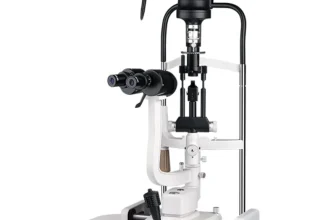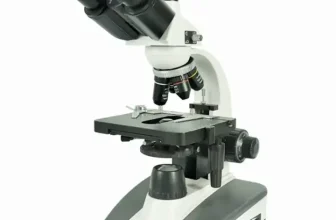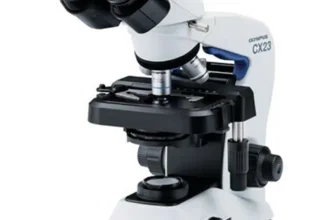Microscopes are instrumental in broadening our understanding of the
world around and within us. They serve as gateways to the microscopic
universe, enabling us to delve into the intricate details of life and
matter that are invisible to the naked eye. These incredibly powerful
tools are pillars for numerous scientific fields, including biology,
geology, and materials science, allowing researchers to explore the fine
details of cells, microorganisms, minerals, and synthetic materials.
Microscopes have revolutionized medical diagnostics, scientific
research, industry quality checks, and even understanding our world’s
historical timeline through the examination of geological samples. By
enabling us to see beyond the macroscopic view, microscopes have
unlocked countless discoveries that have fundamentally shaped our
comprehension of the natural world. The power of magnification, from the
simplest handheld lens to the most advanced electron microscope, plays a
vital role in our scientific and technological advancement.
Now, let’s specifically delve into one type of microscope that has
contributed significantly to these advances—the dissecting
microscope.
Introduction of the
dissecting microscope
The booming field of science and technology has introduced us to
numerous intricate tools designed to improve and enhance our
understanding of the world. Among these, a microscope stands as a
groundbreaking invention, pivotal in magnifying and exploring the unseen
realms of our reality. Within this context, the dissecting microscope, a
specific type of microscope, plays a prominent role. It serves as a
critical instrument for the in-depth study of the finer details of small
objects or surfaces, navigating us through minute complexities that
would otherwise remain undetected by the human eye. Despite its name,
the dissecting microscope extends its applications beyond dissection and
provides a unique lens to the minute complexities of various fields,
including science, education, and medicine. In the subsequent sections,
we will delve deeper into the dissecting microscope, exploring its
history, components, uses, and pros and cons.
Understanding Dissecting
Microscopes
Definition
and explanation of dissecting microscope
A dissecting microscope, also known as a stereo microscope, is a
unique instrument designed for low-magnification observation of
three-dimensional objects. It is called a “dissecting” microscope due to
its use in the examination and dissection of samples, usually when too
small to be seen with the naked eye, but large enough to not require the
high magnification produced by more advanced microscopes.
The critical feature that defines a dissecting microscope is the use
of incident light for illumination, which shines down on the specimen,
allowing it to be viewed in its original color and giving the viewer a
three-dimensional perspective. This is in contrast to other microscope
types, which often use transmitted light, passing through a thin
specimen section.
It typically has a range of magnification from 6x to 50x, with some
models reaching up to 100x. This microscope combines two slightly
different angles of a single image, presenting different views to each
of the user’s eyes, resulting in a stereoscopic, or three-dimensional,
view of the sample. This makes dissecting microscopes particularly adept
at handling tasks requiring a detailed, panoramic view and depth
perception, such as dissection, microsurgery, or the assembly and repair
of small parts.
Differentiating
dissecting microscope from other types of microscopes
The dissecting microscope, often referred to as the stereo
microscope, holds a distinct place among the diverse spectrum of
microscopes, distinguished by its unique features and functionalities.
This type of microscope predominantly varies from other types on two
primary facets: magnification and illumination.
In terms of magnification, dissecting microscopes offer a lower
magnifying power compared to compound microscopes. Typically, the
magnification range of a dissecting microscope lies between 10x to 40x,
whereas compound microscopes can amplify an image up to 1000x or more.
This lower magnification capability of a dissecting microscope allows
for a larger field of view and greater depth of field, making it ideal
for examining larger or more complex specimens such as plants, insects,
rocks, or even circuit boards, which would not be clearly visible or
feasible under a high-power compound microscope.
The key differential aspect in terms of illumination lies in the
direction of the light source. Dissecting microscopes employ incident
light (also known as reflected or downlight) that shines down on the
specimen, unlike compound microscopes which use transmitted light,
illuminated from under the specimen. This means that a dissecting
microscope can efficiently illuminate opaque specimens that do not let
light pass through them, therefore making it suitable for viewing
surface details and textures.
Moreover, the stereo vision provided by a dissecting microscope due
to its dual eyepiece (binocular or trinocular) allows for the
three-dimensional visualization of the specimen, a feature not found in
compound microscopes which offer a two-dimensional view due to a
singular eyepiece. This lends a unique advantage when examining
specimens where depth and spatial understanding are crucial.
So while dissecting microscopes may lack the high power magnification
of their compound counterparts, they make up for it with their unique
ability to provide a detailed, three-dimensional view of larger, more
complex specimens under incident lighting, carving themselves a niche in
a wide array of scientific and industrial applications.
History and
Evolution of Dissecting Microscopes
Origin of dissecting
microscopes
The earliest prototype of the dissecting microscope, often credited
to the English scientist Robert Hooke, dates back to the 17th century.
Hooke’s microscope, documented in his book, “Micrographia” in 1665,
featured a single objective lens and was used mainly for magnifying
small objects to make minute features visible to the naked eye.
However, the modern version of the dissecting microscope, also
sometimes referred to as a stereo or stereoscopic microscope, was
developed much later in the 20th century. This version incorporated two
separate optical paths—a significant enhancement from Hooke’s model—that
enabled three-dimensional viewing of the specimen.
While simplicity was key in the beginning with single lens designs,
the transition into the era of compound microscopes offered new
directions in the late 16th to early 17th centuries. Dutch spectacle
makers Hans and Zacharias Jansen, although mistakenly considered as
inventors of the microscope by some accounts, made substantial
improvements to the instrument by adding two sets of lenses that greatly
improved magnification.
The invention of the achromatic lens by Chester Moore Hall in the
18th century was another milestone, helping microscopes to counter color
distortion. Later introductions of lighting systems and finer focusing
mechanisms also notably shaped the evolution of the dissecting
microscope. Today, we have a versatile and powerful tool that continues
to evolve with technology to further its utility in various fields.
Evolution and
improvements over the years
The concept of the dissecting microscope has undergone significant
transformation over the years. In the initial phase of their
development, these microscopes were fairly simple, equipped with just
the basic magnifying and light focusing capabilities. Improvements have
been continuously made to increase the resolving power, magnification
range, and illumination capacity of these instruments.
Over time, the modification and addition of certain components led to
a substantial enhancement of its efficiency. For instance, modern
dissecting microscopes now feature an independent light source which
aids in the accurate projection of light for better visibility. They are
also often equipped with a zoom lens system which allows for a wider
range of magnification options, thus enabling more detailed examination
of specimens.
With the advancement of technology and digitalization, several
dissecting microscopes have been integrated with computer connections
and cameras. These features permit the capturing and storing of images,
enabling researches to analyze and compare samples at a later point in
time.
Furthermore, the latest generation of dissecting microscopes now
showcase an ergonomic design, providing an optimal level of comfort to
users and facilitating long hours of research without bodily strain.
This shows how far the design of dissecting microscopes has evolved
since its inception, with improvements made prioritizing both
functionality and convenience for the user.
All these successive modifications have not only made dissecting
microscopes more efficient, but they have also broadened the array of
their potential applications. As we look to the future, it’s exciting to
consider how further technological advancements will continue to enhance
the capabilities of these invaluable scientific tools.
Components of a
Dissecting Microscope
Illumination system
The illumination system is a critical component of a dissecting
microscope as it provides the light required to visualize the specimen.
This component greatly influences the quality of the view. Typically,
the illumination in a dissecting microscope comes from two separate
sources, from above (incident light) and from below (transmitted
light).
The incident light illuminates the object from the above,
highlighting its surface features and is particularly useful when
examining opaque objects, as it creates a clear contrast between the
specimen and its surroundings. On the other hand, transmitted light
shines upwards from the base of the microscope and is more suitable for
viewing transparent or semi-transparent specimens.
Most dissecting microscopes allow for adjustable brightness and often
provide the ability to switch between different forms of illumination
based on the requirement of the examination. Modern dissecting
microscopes have advanced to include LED bulbs that offer long life,
cooler temperatures, and a full spectrum light for a more accurate color
rendering. The directional control of light can also be adjusted in some
models to help minimize surface glare from shiny specimens.
In essence, the illumination system is indispensable in a dissecting
microscope, lending significantly to the level of details observed in a
specimen and thereby underlining its importance in scientific
investigation.
Eyepiece or ocular lens
The eyepiece or ocular lens is an integral component of a dissecting
microscope, serving as the top optical element that further magnifies
the image collected by the objective lens. It essentially functions as a
magnifying glass, enlarging the image for the observer’s eye.
Typically, ocular lenses have magnifications ranging from 10x to 20x,
although this can vary based on the specific make and model of the
microscope. Some dissecting microscopes even include several
interchangeable ocular lenses, each with different magnification
abilities to offer a range of observational scales.
Also worth noting is that many ocular lenses in dissecting
microscopes are combined with a pointer or reticle, which can help the
observer identify or focus on a particular area of the sample under
study. The eyepiece lens, being positioned directly in the viewer’s line
of sight, plays a crucial role in the overall functionality and
efficiency of a dissecting microscope.
Objective lens
The objective lens is a vital component of a dissecting microscope,
responsible for collecting light from the specimen and focusing this
light to create a real image. It creates the primary magnified image,
which is subsequently enlarged by the eyepiece.
Different dissecting microscopes might carry a singular or an array
of objective lenses of varying magnifications, typically ranging from 1x
to 100x. This variety is crucial because it allows for different levels
of detail to be observed in the specimen studied. A lower magnification
objective lens gives a broader, but less detailed, view of the specimen,
while a higher magnification objective lens allows for a closer, highly
detailed view.
In most dissecting microscopes, the objective lens can be switched or
rotated to suit the level of detail needed for specific measurements or
observations. The objective lens, in conjunction with the eyepiece,
determines the overall magnification of the specimen image, bringing to
light the intricate details of the specimen under study.
Keep in mind, the objective lens is made from high quality glass for
the purpose of providing sharp, clear and detailed images. It is often
protected by a cover slip and carefully stored when not in use to ensure
its longevity and maintain its quality.
Therefore, the objective lens plays an invaluable role in the
functionality of a dissecting microscope, providing us with a gateway
into the minute and often beautiful world of the extremely small.
Focusing knobs
Dissecting microscopes are equipped with special controls called
focusing knobs, essential for fine-tuning the clarity of the specimen
being observed. They’re typically designed as two adjacent knobs
situated on either side of the microscope for symmetrical, easy
access.
These knobs control the vertical movement of the microscope stage
where the specimen is placed. By turning these controls, users can move
the stage up or down, adjusting the distance between the lens and the
object. This action changes the focal plane, the specific depth of field
that is in sharp focus.
There are typically two types of focusing knobs: coarse and fine. The
coarse focus knob is used to move the stage quickly and is mostly used
to get the sample in the general focus range. On the other hand, the
fine focus knob allows slower, more precise movements of the stage,
enabling sharper and detailed focus on a specific plane of the
sample.
Through these focusing knobs, dissecting microscopes provide a high
level of precision and control, allowing users to visualize all aspects
of their specimens with absolute clarity and detail.
Zoom controls
The zoom controls are a critical component of a dissecting
microscope, vital for observing the fine details in a specimen. These
controls allow the user to adjust the magnification level in a
continuous manner without changing the focus. The zoom mechanism offers
a spectrum of enlargements in a seamless shift from low to high power or
vice versa. This is where a dissecting microscope differs significantly
from its compound counterpart which has a fixed set of
magnifications.
These controls are usually found on the side or top of the microscope
body and are manipulated by simply rotating or sliding them. The zoom
function is particularly advantageous when studying the structure and
characteristics of small objects or organisms, as it allows the user to
gradually zoom in or out to find the optimal perspective for detailed
examination.
It’s important to note that while zooming, the working distance or
the space between the lens and the specimen should remain constant.
However, extremely high zoom levels can sometimes compromise the image
quality due to limitations in lens power. A combination of zoom control
adjustment and proper focusing typically results in the best view of the
subject under study.
Uses of a Dissecting
Microscope
Applications in the
educational setting
Dissecting microscopes, also known as stereo microscopes, play a
fundamental role in educational settings, particularly in biology and
anatomy classes. They are a key teaching tool for elementary to
university level students. Fundamentally, they provide an in-depth look
at objects and organisms and facilitate the understanding of structures
that can’t be seen with the naked eye.
In elementary and high schools, dissecting microscopes are used for
hands-on learning experiences. Young students can use them to explore
and identify parts of small creatures like insects, and examine the
structure of leaves or crystals. This helps them to better understand
the natural world and fosters an appreciation for scientific
inquiry.
At the college and university level, the applications become even
more profound. In these advanced settings, dissecting microscopes are
often utilized in laboratory classes for detailed dissections. This
allows for close inspection and identification of small biological
structures, enhancing students’ understanding of physiology and anatomy.
Apart from biologically-focused classes, dissecting microscopes are also
used in geology and archaeology courses, allowing students to study the
intricate details of rocks, minerals and archaeological artifacts.
Overall, the use of dissecting microscopes in an educational setting
provides students a profound understanding not only of biology, but of
many facets of the natural world. Through practical, hands-on learning,
students are allowed an eye-opening microscopic glimpse of objects in
detail, thereby deepening their appreciation for science.
Utilization in scientific
research
Dissecting microscopes play a pivotal role in various realms of
scientific research. Biologists often resort to this tool to dissect
small organisms, a task that is made easier by the microscope’s
magnification abilities and depth perception. For entomologists, the
study of insects – both externally and internally – has always been
aided by this instrument.
In botany, the dissection of plant species, the extraction of plant
tissues for DNA analysis, or the close examination of seed germination
often require the use of a dissecting microscope. Moreover, geologists
and paleontologists use it to closely inspect rocks, minerals, and
fossils.
Marine biologists also widely use dissecting microscopes to study
various characteristics of different marine organisms, thanks to the
instrument’s capability to provide a clear 3-dimensional field of view
even with translucent samples.
Forensic scientists frequently utilize dissecting microscopes in
their investigations. This tool aids in the identification and
comparison of evidence, such as hair, fibers, and ammunition, at a
microscopic level.
This underlines the profound versatility of dissecting microscopes in
the realm of scientific research, finding use across an array of
disciplines each contributing to advancing our understanding of the
world.
Role in medical practices
Dissecting microscopes play a significant role in various medical
practices. One of the primary applications can be seen in performing
surgeries, specifically microsurgeries. Surgeons often employ this type
of microscope while conducting intricate operations that require
extremely precise manipulations. The enhanced 3D visualization provided
by these scopes assists in ensuring accurate and precise execution,
thereby reducing any possible surgical risks.
These microscopes are also vital during the biopsy process.
Pathologists utilize them for a detailed examination of tissue samples
to explore any abnormal growth or foreign objects. This often serves as
an integral part of diagnosis, enabling doctors to obtain an accurate
understanding of a patient’s condition.
In the dental field, dissecting microscopes have brought
revolutionizing changes. Dentists use these tools for endodontics,
dental implant surgeries, and treating periodontal diseases. They offer
immense assistance in magnifying the view of teeth and gum details,
contributing to a higher success rate of various dental procedures.
In summary, dissecting microscopes are indispensable tools in the
modern-day medical field, aiding in a range of procedures and practices
to ensure patient health and wellbeing.
Advantages
and Disadvantages of Dissecting Microscopes
Benefits of using a
dissecting microscope
Dissecting microscopes offer several advantages that make them an
invaluable tool in numerous fields. First, they provide a three
dimensional view of the specimen, which is particularly useful when
studying structures in depth or conducting dissections. This also allows
for manipulation of the specimen whilst it remains in focus.
Second, dissecting microscopes typically come with a large working
area or stage. This large space allows for tools and equipment to be
used during the examination or manipulation of the specimen, making it
ideal for educational, scientific, and medical purposes.
Third, the low magnification levels, ranging from 10X to 50X, often
yield a wider field of view as compared to high-power compound
microscopes. This wider view enables the user to see more of the
specimen at once, rendering them excellent tools for sorting,
dissection, and assembly work.
Furthermore, some models come equipped with a light source both above
and below the stage, allowing for flexible illumination and better
examination of various types of specimens – both opaque and
transparent.
Lastly, these microscopes can often be used with both eyes open,
reducing eye strain and making them more comfortable for long-term use
which is an undeniable benefit for users who spend extended periods
studying specimens.
Overall, the prime benefits of dissecting microscopes lie in their
functionality and adaptability, proving them as compelling tools for
both basic and intricate examinations.
Limitations
and drawbacks of a dissecting microscope
Despite their many benefits, dissecting microscopes also present a
few limitations. Primarily, they come with a relatively low
magnification power, typically less than 100x. This makes them
unsuitable for viewing organisms or structures at a cellular level. The
device will not provide clear views of bacteria, viruses, or the
internal structure of cells because these are far too small to be
observed under such low magnification. Hence, high-resolution, in-depth
cellular studies are not possible with dissecting microscopes.
Another limitation is the potential for image distortion. As the
magnification level increases, the viewer may notice a decrease in the
clarity and sharpness of the image. Additionally, because the viewing
distance with a dissecting microscope is greater than with other types
of microscopes, small hand movements can cause significant shifts in the
viewing field. This can make manipulating the subject or maintaining a
steady view for prolonged periods challenging.
Finally, the cost of maintaining and buying a dissecting microscope
can also be a drawback. These instruments require regular cleaning and
calibration, which necessitate specialized knowledge and potentially
expensive service contracts. Quality dissecting microscopes are often
pricey, which can be a major limiting factor for educational or
scientific institutions with constrained budgets.
Conclusion
Recap of
the importance and uses of dissecting microscopes
The ability to observe small objects in great details, power to
enhance the learning process, and instrumental role in medical and
scientific research significantly underline the importance of dissecting
microscopes. They not only help educators in intriguing students’
interest in the microscopic world but also assist scientists and medical
professionals in furthering their investigations and procedures. The
continuous advancements in microscope technologies aim to overcome the
existing limitations and offer even better tools for study and
exploration. In the world that constantly strives for progression, the
contribution of tools like the dissecting microscope remains
invaluable.
Final
thoughts on the significance of continued advancements in microscope
technologies.
Microscope technologies, including the dissecting microscope, have
significantly impacted various fields like medicine, research, and
education. The ever-evolving advancements in this technology over the
years have continually refined the way we explore the minutiae of our
universe, from the tiniest organisms to complex cellular structures
within us. We now find ourselves capable of not just observing but
understanding the fabric of life on a granular level. As we move
forward, these advancements in microscope technologies hold the immense
promise of newer discoveries and deeper understanding. The continued
enhancements in magnification, resolution, and functionalities will only
broaden their utility, as well as fostering the growth of scientific
exploration and innovation. It’s safe to say that as our curiosity about
the world remains unsatisfied, we will forever be bound to the dynamic
evolution of these powerful tools of perception. Dissecting microscopes,
alongside their counterparts, thus stand as a testament to our
scientific ingenuity and our incessant quest for knowledge.







